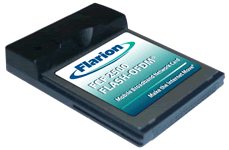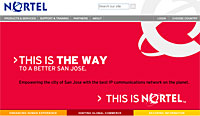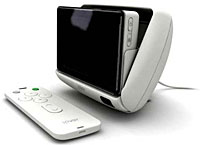 UK Super-regulator Ofcom have today published details of a new regulatory approach for the UK’s fixed line telecommunications market.
UK Super-regulator Ofcom have today published details of a new regulatory approach for the UK’s fixed line telecommunications market.
We think this information is significant enough to be reproduced without editing.
A new regulatory approach for fixed telecommunications
Ofcom today published details of a new regulatory approach for the UK’s fixed line telecommunications market.
Ofcom has concluded that a new approach is necessary for the longer term, based on real equality of access to those parts of the fixed telecoms network which BT’s competitors cannot fairly replicate.
This new approach to regulation has six objectives:
- to drive down the price of calls, connections and services for consumers and businesses;
- to support more innovation through the growth of competitive products and services, such as faster broadband, television and voice over the internet and video-on-demand, from a range of credible companies;
- to provide regulatory certainty for providers and investors so that they commit to developing, marketing and extending these products and services for UK consumers and businesses;
- to re-focus regulation where it is truly needed, with swifter remedies to tackle anti-competitive behaviour and a structure which delivers equivalence to a timetable with real penalties and incentives;
- to remove regulation wherever competition is effective and the effect of open markets – rather than regulatory intervention – ensures the delivery of choice, value and quality for consumers; and
- ensure the necessary level of consumer protection through a combination of codes, sanctions and effective consumer information.
Ofcom Chairman David Currie said: “We believe these proposals have the potential to encourage more sustainable competition, more services, lower prices and greater consumer choice.”
Ofcom Chief Executive Stephen Carter said: “Effective regulation for the telecommunications industry needs to be forward looking, needs to encourage competition in the right places and needs to deliver tangible benefits for customers.”
He added: “These proposals are substantially different to traditional telecommunications regulation. They demand significant changes in key areas, and recognise that in other areas regulation can be rolled back.”
Proposed Undertakings
On Tuesday 21 June the Board of BT Group plc agreed in principle to offer to the Ofcom Board legally binding undertakings in lieu of a reference under the Enterprise Act. On Wednesday 22 June 2005 the Ofcom Board accepted this offer.
The proposed undertakings commit the company to substantive changes in organisation and behaviour; full detail of the proposed undertakings will be published on 30 June 2005.
A more detailed Ofcom Statement can be found online at www.ofcom.org.uk/consult/condocs/telecoms_p2/statement/
This news release should be read in conjunction with that statement. The full undertakings – which will be subject to final consultation – will be published on 30 June, together with a number of other proposals relevant to securing greater competition in the fixed line market, the details of which follow later in this news release.
- Enforceability. The final undertakings to be offered by the Board of BT Group plc will be in lieu of a reference to the Competition Commission under Section 155(1) of the Enterprise Act 2002. They will be legally binding and enforceable, and will mean that:
- in the event of a breach, Ofcom could take the matter to the High Court. The Board of BT Group plc would then be responsible for ensuring compliance with the order of the Court;
- third-parties affected by a breach could also seek damages via the Court to recover losses incurred; and
- these undertakings will sit alongside Ofcom’s existing competition and regulatory power.
Ofcom will publish the final undertakings for a six week consultation on 30 June 2005.
- Branding and identity. The proposed undertakings offered by BT will stipulate the setting up of a new – and operationally separate – business unit, provisionally entitled Access Services, but with a distinct new brand and identity to be devised in the coming weeks. The new business unit will be staffed by around 30,000 employees presently responsible for the operation and development of BT’s local access networks. It will have:
- separate physical locations for management teams;
- separate bonus schemes; whilst the new business unit’s staff will remain BT Group plc employees, their long-term incentive plans will be changed to a new scheme which reflects the objectives of the new business unit, not those of the BT Group plc; and
- over time, new branding on uniforms and vehicles which emphasises its operational separation from BT Group plc.
- given the limited size of the market in Northern Ireland (and, as a consequence, BT’s current operational structure in Northern Ireland), BT has proposed – and Ofcom has accepted – that the three operational changes above will not apply to Northern Ireland. However, all other aspects of the proposed undertakings will apply equally across the whole of the UK; and
- separate operating and trading systems.
- Product equivalence. The new business unit will be required, through a set of formal rules on governance and separation, to support all providers’ retail activities (including those of BT Retail) on a precisely equivalent basis, which Ofcom terms “Equivalence of Input”. Equivalence of Input will mean that all providers will benefit from:
- the same products, with equal opportunity to contribute to the development of new products;
- the same prices, offered to all providers equally; and
- the same processes, to ensure all providers are able to order, install, maintain and migrate connections for their customers on equal terms.
- Products and services. The new business unit will offer a universally available product and service set:
- Local Loop Unbundling (LLU) products, including fully unbundled loops (where a provider takes full responsibility for all of the customer’s voice and broadband services) and shared loops (where BT Retail continues to provide voice services and another provider is responsible for broadband).
- All forms of Wholesale Line Rental (WLR), where a provider takes responsibility for all voice services and provides a single bill for both line rental and calls.
- Backhaul products, which are used to connect the local access network to the core network. Some providers have built out their own backhaul networks; however many others are dependent on BT for wholesale backhaul services.
Equivalence of Input will also apply to IPStream – BT’s wholesale internet products used by many Internet Service Providers (ISPs) to provide broadband connections for their customers.
Detail of the timescales under which Equivalence of Input will apply to these services are set out in the accompanying Statement, which can be found online at;
www.ofcom.org.uk/consult/condocs/telecoms_p2/statement/
- Next Generation Networks. The proposed undertakings will also set out a number of clear principles which BT Group plc should follow in the design, procurement and build of its next generation 21st Century Network. These principles will help ensure that other providers who will depend upon interconnection with BT’s 21CN do not suffer competitive disadvantage.
- Board and governance. BT Group plc and the new business unit’s compliance with the proposed undertakings will be monitored by a new Equality of Access Board (EAB), which will also oversee the delivery of other legacy regulated products not directly delivered by the new business unit. The proposed undertakings from the Board of BT Group plc require BT Group plc to act swiftly upon the recommendations of the EAB.
- The EAB will be a compliance Board, not an operating management Board;
- The EAB will be chaired by Carl Symon, a Non-Executive Director on the Board of BT Group plc, with four other members, three of whom will be independent of BT Group plc and will be appointed in consultation with Ofcom;
- The EAB will meet between six and ten times during the first year of operation;
- The EAB will produce a regular summary report of its activities, which will be published; and
- The EAB will have extensive powers to seek access to information from wherever in BT Group plc it deems necessary to do its work.
Ofcom Chief Executive Stephen Carter said: “The Ofcom Board proposes to accept BT Group plc’s proposed undertakings on the critical assumption that BT Group plc does not merely deliver the letter of the undertakings, but also the spirit.”
Other regulatory policy initiatives
Ofcom has also been developing a series of regulatory policy initiatives under its sectoral powers which, in their impact on the competitive market, will complement the proposed Enterprise Act undertakings offered by BT Group plc.
Cost of capital Separately, Ofcom has today also published a further consultation document on the Weighted Average Cost of Capital it will apply in assessing the rate of return on BT’s regulated products.
The consultation document can be found online at www.ofcom.org.uk/consult/condocs/cost_capital2/
Establishing the relationship between risk and return is an important aspect of Ofcom’s work. The more high-risk a company’s investment, particularly in terms of the volatility of returns compared to the volatility of returns on equity investments generally, the more expensive it becomes to raise capital in the markets, as investors expect a higher rate of return to acknowledge the degree of risk involved.
Where Ofcom is required to set a limit on the price a company can charge for its regulated products and services, it is important that those limits allow the company to make enough of a return on its investments to reflect the costs it incurs in raising capital.
In line with its preliminary consultation, Ofcom will propose separate levels for the traditional copper access network which differ from the overall cost of capital for BT Group as a whole. Ofcom believes that this approach will provide a fairer pricing regime for competitors using BT’s access network whilst allowing BT an appropriately higher return on higher-risk investments.
In the coming weeks Ofcom will also publish four further documents. These are:
Undue Discrimination Guidelines Ofcom has imposed regulation on some companies requiring them not to discriminate unduly to prevent then from using their dominance to the detriment of competition and consumers.
Ofcom is reviewing the guidelines that describe how it will investigate potential cases of undue discrimination. The present approach was designed by Ofcom’s predecessor Oftel before the Communications Act 2003 came into effect. The new approach proposed in the consultation, to be published on 30 June, will tighten the requirements and in Ofcom’s view will help increase effective competition.
The consultation will also include, by way of illustration, a number of examples of the kind of behaviour which may lead to undue discrimination. Those examples are included to help foster understanding of the new approach.
Wholesale Broadband BT Group plc has today announced that it will cut the price for full LLU by 24% per cent from £105 to £80 per year, with effect from August. BT Group plc has also committed to deliver stability on IPStream pricing until there are 1.5 million unbundled lines in the UK to encourage competition.
Ofcom believes that these voluntary measures from BT Group plc will help to stimulate greater competition in broadband markets by providing reassurance for LLU operators investing in deep level infrastructure.
Ofcom welcomes these initiatives from BT. It will publish a short statement on 30 June outlining its future plans for regulation of Wholesale Broadband. Ofcom is intent on fostering competition in the LLU market and will be quick to use its regulatory powers if required.
Next Generation Networks Ofcom will consult on the detailed practical steps to ensure that the development and deployment of BT Group plc’s Next Generation Network – 21CN – offers all providers the same products, prices and processes on equal terms and does not inhibit reasonable developments by alternative network operators.
The consultation, also to be published on 30 June 2005, will propose that BT Group plc should not simply inform its competitors what it is doing, but instead share details of deployment and interconnection with its competitors via a genuinely cooperative new NGN forum.
Universal Service Obligation Ofcom will consult on the outcome of its analysis of the Universal Service Obligation – the statutory safeguards which provide important citizen and consumer protection measures, including tariffs for people on low incomes, obligations to install new lines upon request and commitments to provide and maintain the public payphone service. The consultation will be published on 30 June 2005.
Deregulatory measures Ofcom is seeking to withdraw from the regulation of competitive markets wherever feasible and appropriate. Ofcom has previously consulted on deregulating in two narrowband wholesale markets. In July 2005 Ofcom intends to consult on possible deregulation in the leased lines and large business markets.
Ends.
 Long shunned as hobby-obsessed lonely losers living in messy bedrooms with a dreadful taste in music, geeks, computer spods and sci-fi nuts have revealed themselves as a lucrative target for advertisers.
Long shunned as hobby-obsessed lonely losers living in messy bedrooms with a dreadful taste in music, geeks, computer spods and sci-fi nuts have revealed themselves as a lucrative target for advertisers.  The bigwigs of Sci-Fi conducted the research to try and work out the popularity of the multi-billion dollar genre when it was supposedly the province of “solitary, unpopular individuals with niche interests and questionable personal hygiene habits.”
The bigwigs of Sci-Fi conducted the research to try and work out the popularity of the multi-billion dollar genre when it was supposedly the province of “solitary, unpopular individuals with niche interests and questionable personal hygiene habits.”  The bit that will get the advertisers moist in their strap lines is the fact that geeks are 90% more likely to be the first among their chums to invest in new products.
The bit that will get the advertisers moist in their strap lines is the fact that geeks are 90% more likely to be the first among their chums to invest in new products.  In a cornucopia of convergence, BT has announced their intention to use the Microsoft TV Internet Protocol Television (IPTV) Edition software platform to deliver TV over broadband in the UK. Internally within BT, the project is referred to as Project Nevis.
In a cornucopia of convergence, BT has announced their intention to use the Microsoft TV Internet Protocol Television (IPTV) Edition software platform to deliver TV over broadband in the UK. Internally within BT, the project is referred to as Project Nevis.  As the sound of mutual backslapping threatened to reach ASBO-generating levels, Moshe Lichtman, corporate VP of the Microsoft TV division gushed:
As the sound of mutual backslapping threatened to reach ASBO-generating levels, Moshe Lichtman, corporate VP of the Microsoft TV division gushed:  Last weekend there was a report that France Telecom (FT) were rumored to be buying Cable and Wireless (C&W) for GBP 4bn. FT has of course denied it.
Last weekend there was a report that France Telecom (FT) were rumored to be buying Cable and Wireless (C&W) for GBP 4bn. FT has of course denied it.  One area where they have invested in and have made real progress is Local Loop Unbundling (LLU) with their purchase of Bulldog (for GBP 18m). Bulldog have now unbundled about 400 exchanges and have plans to unbundle another 400 by the end of the year.
One area where they have invested in and have made real progress is Local Loop Unbundling (LLU) with their purchase of Bulldog (for GBP 18m). Bulldog have now unbundled about 400 exchanges and have plans to unbundle another 400 by the end of the year.  Wanadoo (the ISP arm of FT) has stated they are going to invest EU 300m in unbundling exchanges (in the first year) and rumour has it there’s a total of EU 1bn over 3 years for LLU. So FT could buy C&W just for the LLU aspects, but really does seem excessive. C&W bought Bulldog for GBP 18m and they’ve invested at least 10’s of million into them. So 4bn is a HUGE premium to pay for a ready made network and 10’s of thousands of customers. Wanadoo already have considerably more broadband customers than Bulldog.
Wanadoo (the ISP arm of FT) has stated they are going to invest EU 300m in unbundling exchanges (in the first year) and rumour has it there’s a total of EU 1bn over 3 years for LLU. So FT could buy C&W just for the LLU aspects, but really does seem excessive. C&W bought Bulldog for GBP 18m and they’ve invested at least 10’s of million into them. So 4bn is a HUGE premium to pay for a ready made network and 10’s of thousands of customers. Wanadoo already have considerably more broadband customers than Bulldog.  The announcement of the Finnish 450 MHz cellular data licence isn’t today’s surprise; the surprise is that Flarion – the technology provider – is not announcing that Flash-OFDM is now an ITU standard. There should have been such an announcement: why the delay?
The announcement of the Finnish 450 MHz cellular data licence isn’t today’s surprise; the surprise is that Flarion – the technology provider – is not announcing that Flash-OFDM is now an ITU standard. There should have been such an announcement: why the delay?  Official details of the announcement include optimistic pronouncements from Flarion, but nothing about what really matters: the need for the Flarion Flash-OFDM technology to be a standard.
Official details of the announcement include optimistic pronouncements from Flarion, but nothing about what really matters: the need for the Flarion Flash-OFDM technology to be a standard.  A number of people have raised concerns as to how open an organisation Ofcom is. It’s a public corporation, set up in many ways like the BBC, but it was setup with the knowledge that the UK Freedom Of Information Act (FOIA) would take effect in January 2005. This has led it to define the accessibility of the information that it produces, as it generates it.
A number of people have raised concerns as to how open an organisation Ofcom is. It’s a public corporation, set up in many ways like the BBC, but it was setup with the knowledge that the UK Freedom Of Information Act (FOIA) would take effect in January 2005. This has led it to define the accessibility of the information that it produces, as it generates it.  Nortel NT and BB Mobile are chuffed to bits to have achieved what they claim is the world’s “first seamless handoff of voice and data services between a third generation (3G) cellular network operating on the 1.7 GHz radio frequency band and a wireless local area network (LAN)”.
Nortel NT and BB Mobile are chuffed to bits to have achieved what they claim is the world’s “first seamless handoff of voice and data services between a third generation (3G) cellular network operating on the 1.7 GHz radio frequency band and a wireless local area network (LAN)”.  In those trials, boffins were able to notch up Japan’s first 14.4 million bits per second (Mbps) wireless data transmission via the 1.7 GHz radio frequency band for mobile communications and Nortel’s high-speed downlink packet access (HSDPA) technology.
In those trials, boffins were able to notch up Japan’s first 14.4 million bits per second (Mbps) wireless data transmission via the 1.7 GHz radio frequency band for mobile communications and Nortel’s high-speed downlink packet access (HSDPA) technology.  A note at the end of the press announcement: “Certain information included in this press release is forward-looking and is subject to important risks and uncertainties. The results or events predicted in these statements may differ materially from actual results or events….”
A note at the end of the press announcement: “Certain information included in this press release is forward-looking and is subject to important risks and uncertainties. The results or events predicted in these statements may differ materially from actual results or events….”  As you probably know, we’re big fans of the Internet-based telephony application Skype, and when we got our grubby hands on an imate JAM PocketPC phone (with SanDisk Wi-Fi card), we couldn’t wait to start reaping those free VoIP calls with Skype for Pocket PC, v1.1.0.6.
As you probably know, we’re big fans of the Internet-based telephony application Skype, and when we got our grubby hands on an imate JAM PocketPC phone (with SanDisk Wi-Fi card), we couldn’t wait to start reaping those free VoIP calls with Skype for Pocket PC, v1.1.0.6.  Using Skype to place voice calls to Skype users or via SkypeOut was simplicity itself, with almost all attempts to connect calls successful first time. Sadly, once connected, things weren’t quite so rosy.
Using Skype to place voice calls to Skype users or via SkypeOut was simplicity itself, with almost all attempts to connect calls successful first time. Sadly, once connected, things weren’t quite so rosy.  But I battled on, and found subsequent Skype calls to be a veritable potpourri of good, bad and indifferent, with more terrible calls than good ones.
But I battled on, and found subsequent Skype calls to be a veritable potpourri of good, bad and indifferent, with more terrible calls than good ones.  As we reported in March 2005, there’s free Skype access provided at hundreds of airports, railways stations etc through The Cloud’s network, which – in theory – means you could be ringing up associates worldwide for nowt.
As we reported in March 2005, there’s free Skype access provided at hundreds of airports, railways stations etc through The Cloud’s network, which – in theory – means you could be ringing up associates worldwide for nowt.  In a deluge of announcements, iRiver has paraded four new flash-memory based music players before the SEK exhibition in Seoul this week.
In a deluge of announcements, iRiver has paraded four new flash-memory based music players before the SEK exhibition in Seoul this week.  The second player is the H10 Junior, a flash-based Mini Me version of the popular H10 player, which some patronising marketing genius has declared as “One For The Ladies”.
The second player is the H10 Junior, a flash-based Mini Me version of the popular H10 player, which some patronising marketing genius has declared as “One For The Ladies”.  Wrapping up iRiver’s latest product shifting marathon is the T20 and T30 flash music players.
Wrapping up iRiver’s latest product shifting marathon is the T20 and T30 flash music players.  A survey by technology researchers IDC revealed that passengers aren’t too keen on the prospect of spending long flights listening to fellow passengers bellowing into their mobile phones.
A survey by technology researchers IDC revealed that passengers aren’t too keen on the prospect of spending long flights listening to fellow passengers bellowing into their mobile phones. The growth of clever-clogs smartphones phones like the i-mate JAM and PalmOne Treo would allow connected passengers to check their email and surf the web during flights.
The growth of clever-clogs smartphones phones like the i-mate JAM and PalmOne Treo would allow connected passengers to check their email and surf the web during flights.